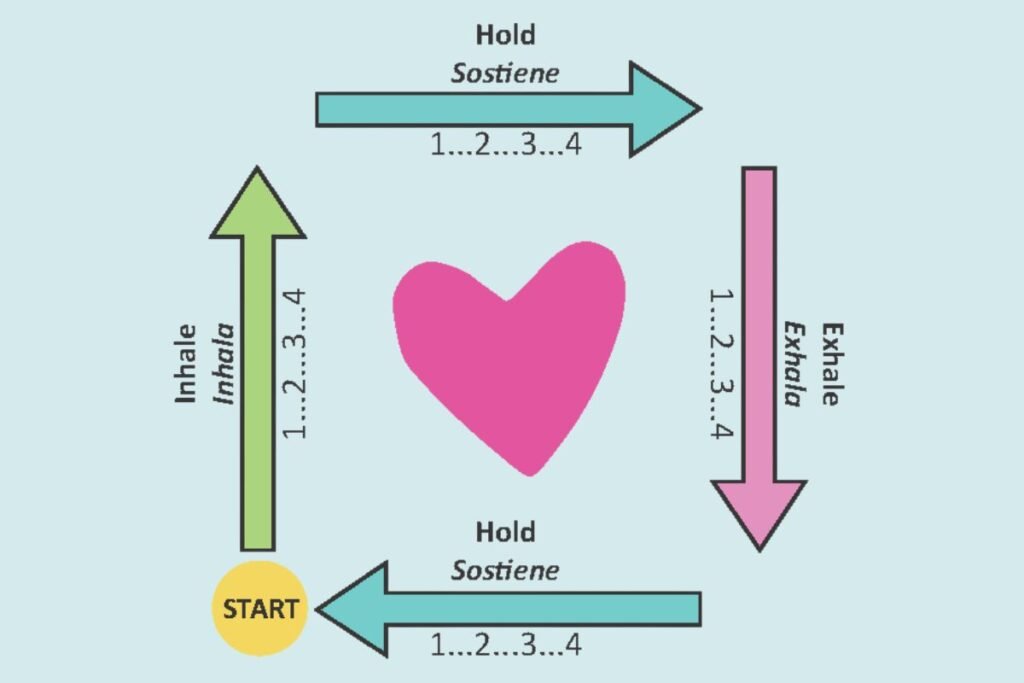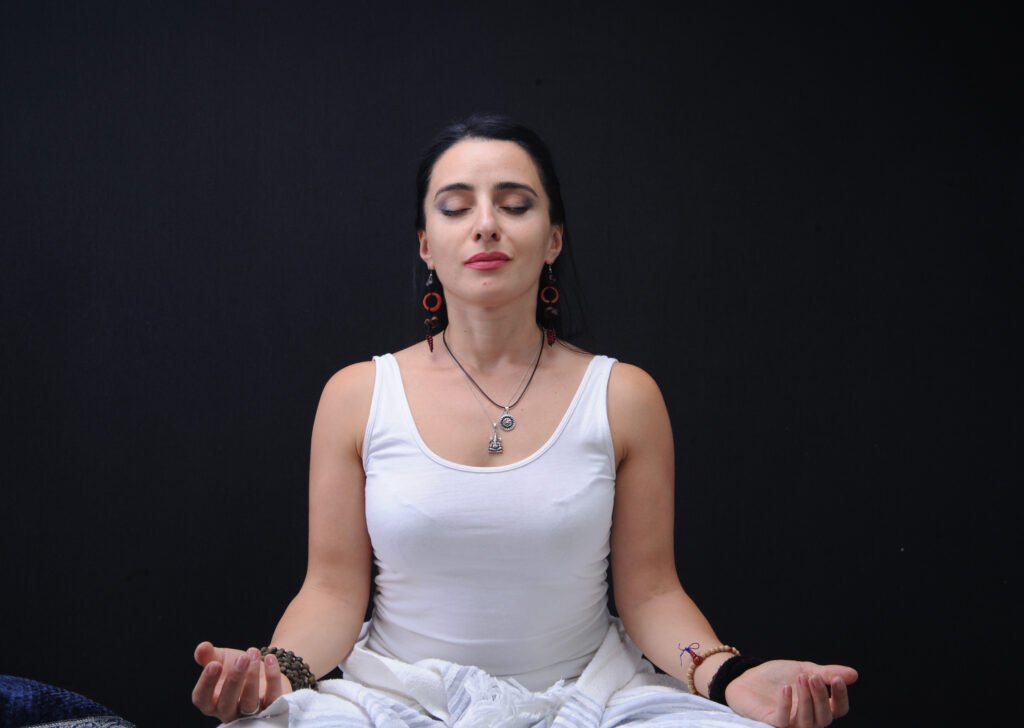If you need to quickly calm down and organize your thoughts, this guide is for you.
Breathing exercises to fight anxiety
If you’re running out of time before a deadline, reading social media news turns into doomscrolling, and you’re constantly anxious, it’s time to pause and take a deep breath. We suggest doing some breathing exercises that can help you regain control and calm down.

Abdominal Breathing
According to the American Institute of Stress, 20-30 minutes of abdominal (diaphragmatic) breathing can reduce stress and anxiety.
How to breathe:
1. Find a quiet place to sit or lie down comfortably.
2. Place one hand on your chest and the other on your abdomen, just below the rib cage. Then relax your stomach: don’t suck it in or tighten your muscles.
3. Slowly inhale through your nose using your abdomen and ensure that the hand below your rib cage rises, while the hand on your chest stays still.
4. During the inhale, mentally scan your body. You may notice tension in areas where you hadn’t noticed it before.
5. Exhale through slightly pursed lips and try to contract your abdominal muscles to push all the air out. During the exhale, focus on relaxing those parts of your body where you noticed tension.

Box Breathing
The so-called “box breathing” or 4-4-4-4 breathing can increase productivity and concentration, and also help manage stress. For example, Navy SEALs use this technique. If you’ve ever noticed that you breathe in rhythm with a song you’re listening to, you are already familiar with this exercise.
How to breathe:
1. Exhale while counting to four.
2. Hold your breath for four counts.
3. Inhale while counting to four.
4. Hold your breath again for four counts.
5. Exhale and repeat the exercise.

Pursed Lip Breathing
This simple breathing technique helps not only with anxiety. The American Thoracic Society recommends pursed lip breathing for patients with Chronic Obstructive Pulmonary Disease (COPD) to manage shortness of breath — this exercise helps increase oxygen intake into the lungs.
How to breathe:
1. Sit comfortably, relaxing your neck and shoulders.
2. Take a slow breath in through your nose for a couple of seconds, keeping your mouth closed.
3. Slowly exhale for four seconds through pursed lips, releasing all the air from your lungs.
4. Repeat the exercise several times.
It’s important to note: if the shortness of breath doesn’t subside or worsens after performing the exercise, seek medical help.

Resonant Breathing
Resonant (coherent) breathing helps you relax and also increases heart rate variability. This indicator reflects the irregularity of the heartbeat — the higher the variability, the better the body controls heart function and mood, adapting to stressful situations.
How to breathe:
1. Lie down or sit and close your eyes.
2. Slowly inhale through your nose for six seconds, making sure the air doesn’t completely fill your lungs.
3. Slowly exhale for six seconds without exerting effort.
4. Repeat the practice for 10 minutes.
——
These are effective breathing exercises that have been proven to help reduce anxiety, stress, and improve mental clarity. Breathing exercises are a simple yet powerful way to manage stress and anxiety. By incorporating these techniques into your daily routine, you can improve your emotional well-being, enhance your mental clarity, and regain control over your stress response.
With regular practice, these breathing exercises can help you cultivate a sense of balance and resilience, allowing you to tackle stress with ease and confidence.

